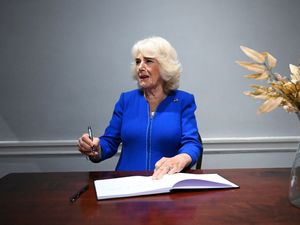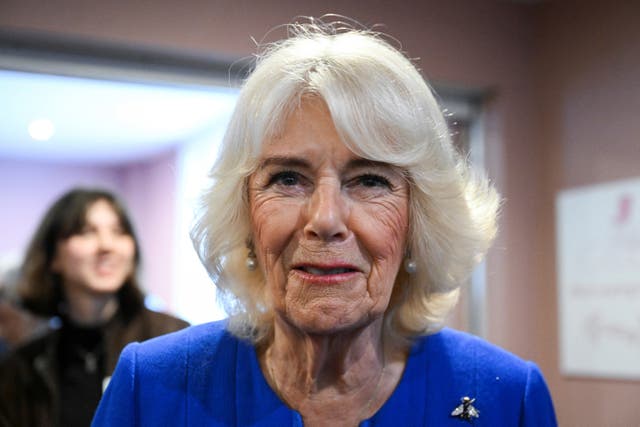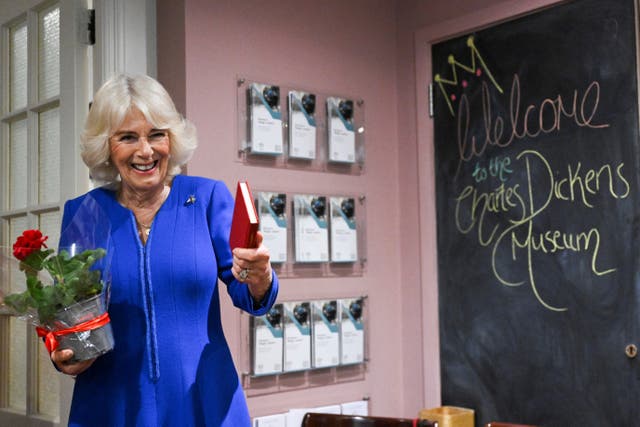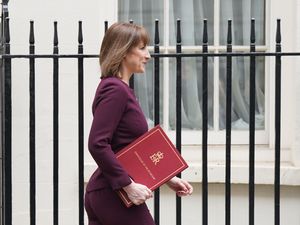Queen walks in footsteps of Charles Dickens on visit to his former home
Camilla visited the writer’s only remaining London home.

The Queen took a shine to a diamond ring worn by Charles Dickens during his lifetime and quipped “I won’t nick it” after holding the jewellery.
Camilla lightened the mood after being told the story of how Dickens’ sister-in-law Mary Hogarth died in his arms after collapsing the night before and he took her ring as a keepsake.
The Queen heard the tale when she visited the Charles Dickens Museum, established in the writer’s only remaining London home, to celebrate its 100th anniversary and hear its patrons, actors Miriam Margolyes and Simon Callow, read extracts from his works and letters.
When Oliver Dickens, the Victorian writer’s great, great, great grandson, gave her the ring, as they stood in the bedroom where Ms Hogarth died, she said: “It is rather lovely” and joked “I won’t nick it” as she handed it back.

Dickens lived in the town house during the early years of his marriage to wife Catherine, completing The Pickwick Papers and writing Oliver Twist in the rented property in Holborn, central London, leaving as his family grew and his career flourished in 1839 after two years.
Camilla toured the museum seeing his Dickens’ writing desk, his many portraits, letters and even a smart outfit he wore to meet royalty.
Sandra Lynes Timbrell, chairwoman of the museum’s board of trustees, gave a speech to gathered volunteers and supports of the museum telling them they were in the former home of “one of the most influential writers in the English language”.

She added: “Few figures in our literary history have created works that have had such a lasting impact, not only through their writing, but also through their ability to challenge and to reshape the social fabric of their time, or even in a sense, to invent Christmas.
“Dickens understood storytelling to unite people and to provoke change.
“His words have deeply influenced our understanding of charity and social responsibility and their relevance endures just as strongly today as it did in their own time.”





